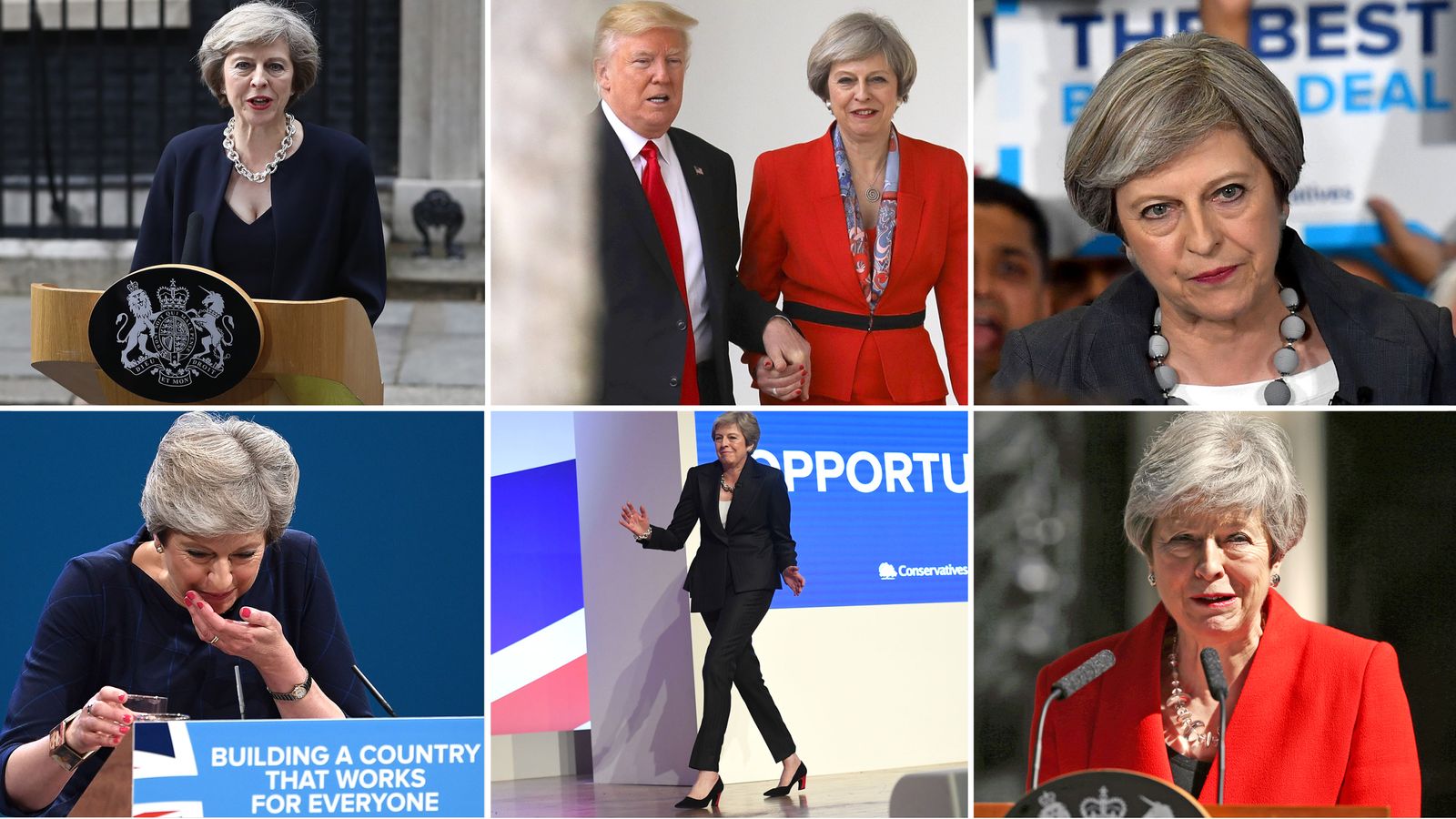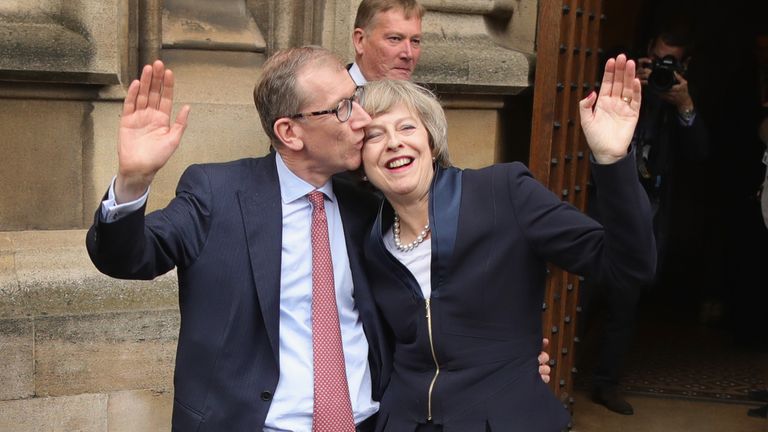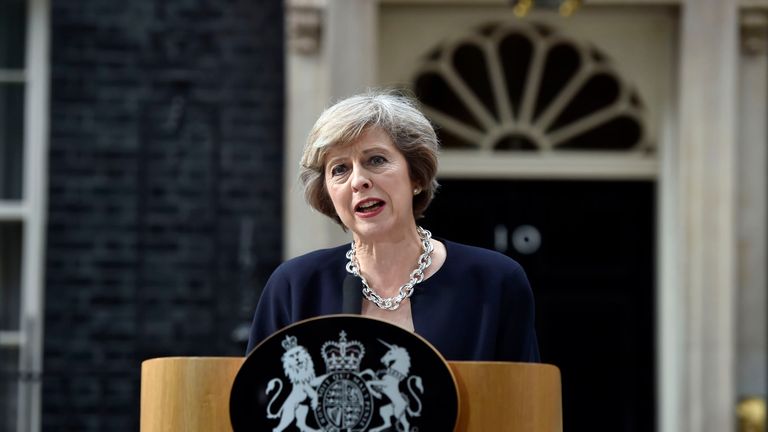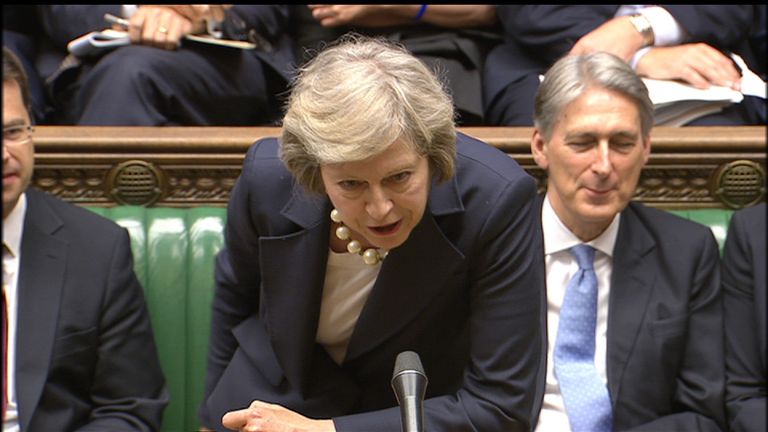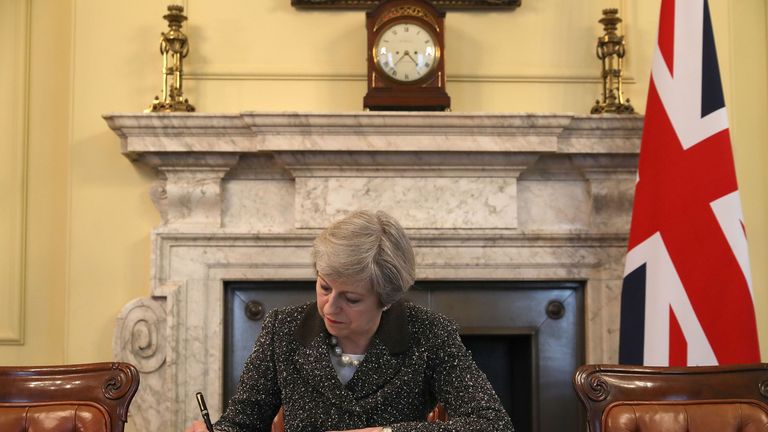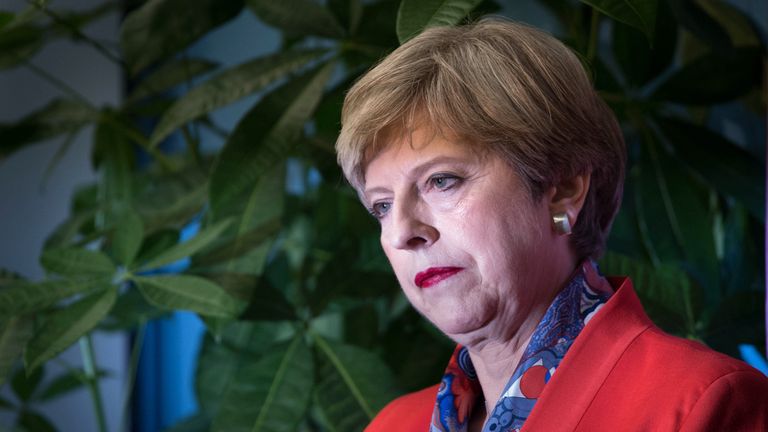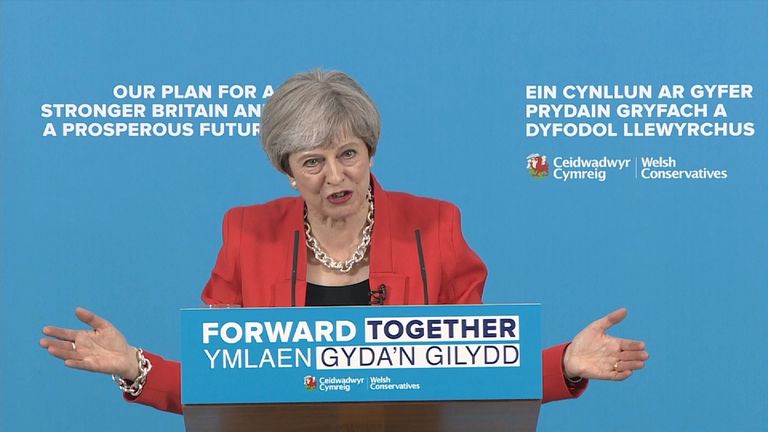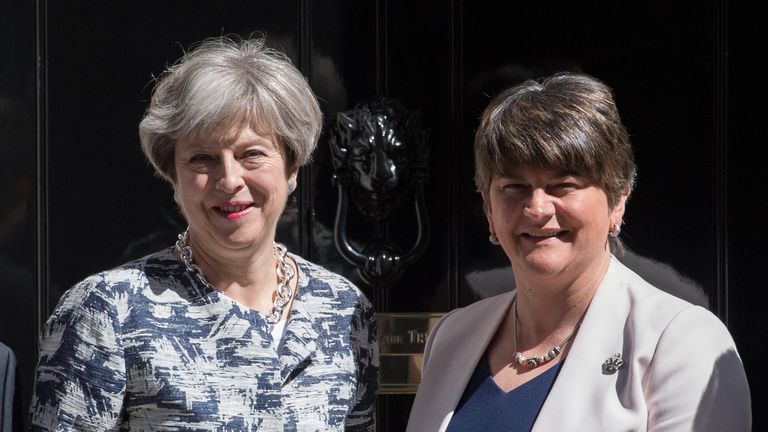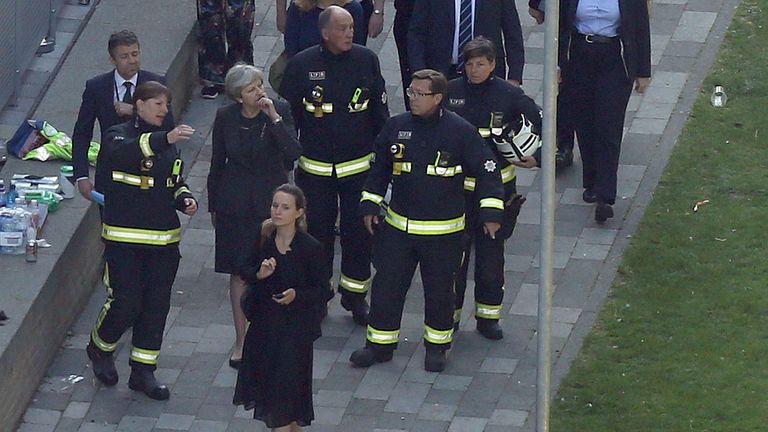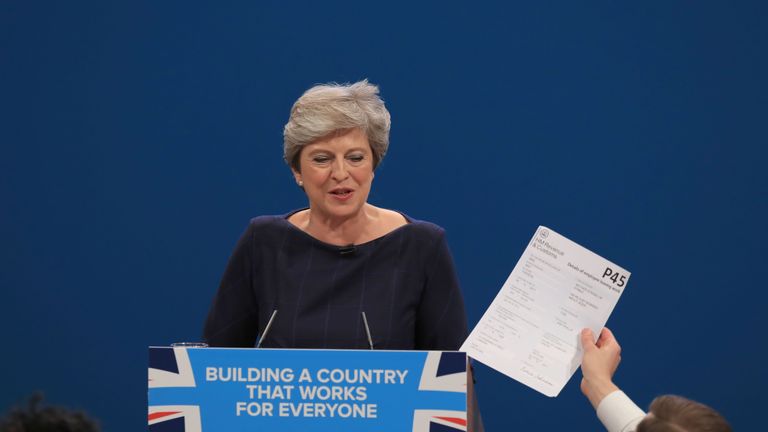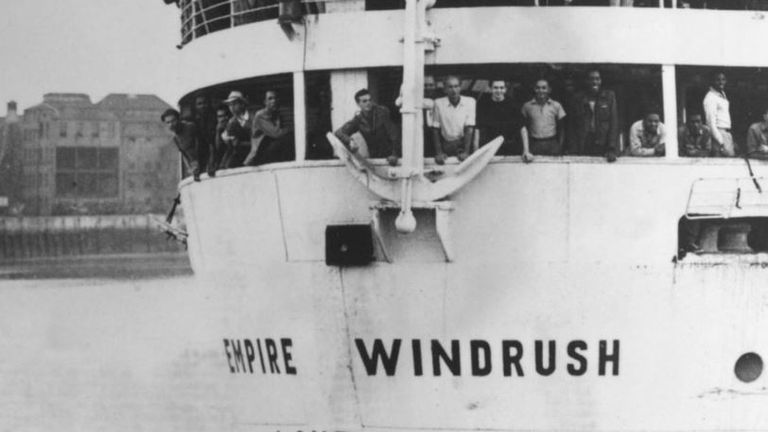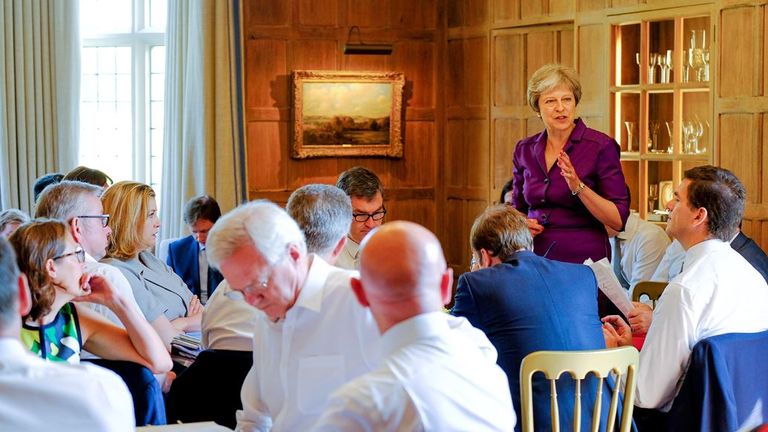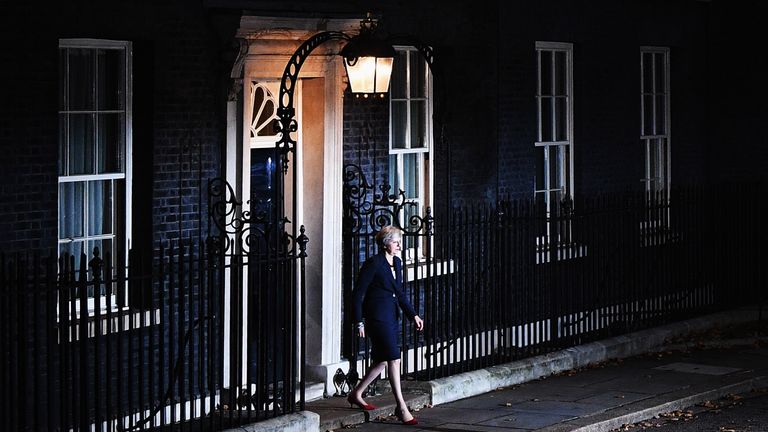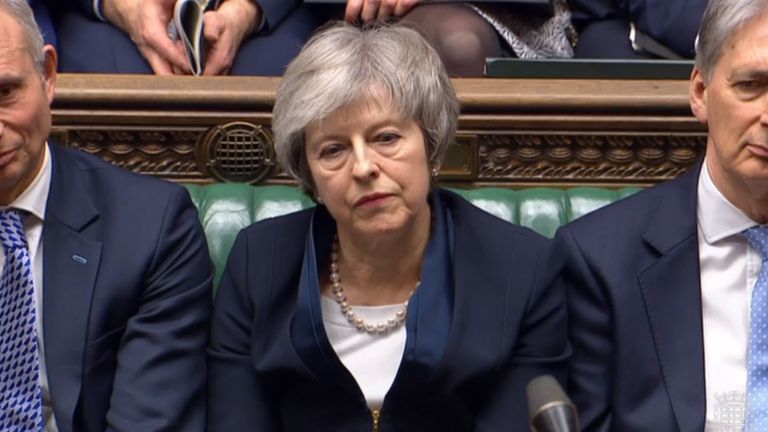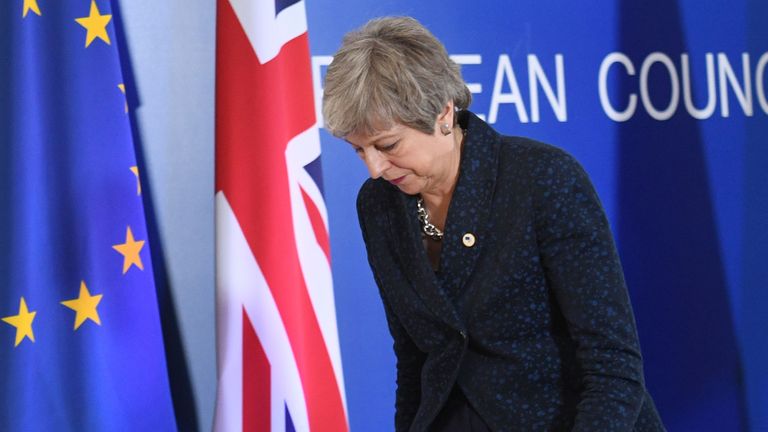It started with a pledge on the steps of Downing Street to tackle “burning injustices”, but Brexit sapped her energy and her time in office ended with an emotional goodbye.
As Theresa May announces she is stepping down as an MP at the next election, we take a look back at the highs and lows from her three years as prime minister from 2016 to 2019.
‘Submarine May’ sinks her rivals
As British politics reeled from the Brexit vote in the June 2016 referendum, the race to succeed David, now Lord, Cameron in Number 10 got under way.
Mrs May, who had been home secretary for six years under Lord Cameron, was not seen as the early favourite.
She had kept her head down during the campaign, save for one nuanced speech making a qualified case for Remain.
According to a book by Lord Cameron’s spin doctor Sir Craig Oliver, his allies branded her “Submarine May” for disappearing when the PM needed her.
She surfaced with a well-received leadership pitch in which she declared: “I’m Theresa May and I’m the best person to be prime minister.”
The path to power became a little clearer for Mrs May when presumed front-runner Boris Johnson stunned Westminster by revealing he would not be standing.
She then emerged as the clear choice of Tory MPs in a series of ballots in Westminster, setting the stage for Mrs May to face off against then-junior minister Andrea Leadsom in a vote among party members.
But before this could happen, Mrs Leadsom quit the race over a controversial newspaper interview in which she suggested being a mother made her a better candidate than the childless Mrs May.
And that was that.
Lord Cameron brought forward his resignation and handed over power to Mrs May on 13 July 2016.
The woman who had wanted to be Britain’s first female leader had made it to Downing Street, following in the footsteps of Margaret Thatcher.
May promises to build a ‘better Britain’
Given Brexit came to dominate her premiership, it is ironic that Mrs May did not mention the word once in her first speech after becoming PM.
Instead, the focus was on building a “better Britain” and making it a “country that works for everyone”.
Addressing those who were “just managing” to get by, she said: “I know you’re working around the clock, I know you’re doing your best, and I know that sometimes life can be a struggle.
“The government I lead will be driven not by the interests of the privileged few, but by yours.”
Strong PMQs debut evokes Thatcher comparisons
A week after becoming PM, Mrs May faced off against Jeremy Corbyn at the despatch box in the weekly clash between prime minister and leader of the opposition.
Facing a new opponent, the Labour leader sought to land a few blows by raising employment figures and unscrupulous bosses.
But Mrs May capitalised on disquiet with her opponent’s leadership with a well-delivered jibe.
“I suspect that many Members on the opposition benches might be familiar with an unscrupulous boss,” she began.
“A boss who does not listen to his workers, a boss who requires some of his workers to double their workload and maybe even a boss who exploits the rules to further his own career.
“Remind him of anybody?”
This delighted those on the Conservative benches and prompted a slew of favourable newspaper headlines comparing Mrs May with Mrs Thatcher.
‘No deal for Britain is better than a bad deal’
This phrase, uttered in the first of many set piece Brexit speeches at Lancaster House in January 2017, was one of a few that came to define Mrs May’s premiership.
Supporters saw it as evidence of her determination to fight for Britain and not give in to any outrageous demands from Brussels.
The front page of the following day’s Daily Mail declared: “Steel of the new Iron Lady”.
But critics saw it as an unrealistic negotiating gambit that did not stand up to scrutiny.
Downing Street stood by the claim for more than two years, despite most in Westminster deeming it highly unlikely that Mrs May would walk away from the talks and take Britain out of the EU without a deal.
Holds hands with Donald Trump
Mrs May was the first foreign leader to meet the US president after his inauguration in January 2017.
The PM got Mr Trump to reaffirm his commitment to the NATO alliance and there were warm words from the president on the prospect of a post-Brexit free trade deal.
But one particular image came to define the trip.
As they walked in the grounds of the White House, the pair briefly held hands.
Some saw it as a good thing, an example of a new PM forging a close relationship with a valued ally.
But others said it sent the wrong message amid criticism of the president over a range of misogynistic comments.
The Brexit countdown begins
After fleshing out her negotiating aims for Brexit in her first few months in office, including confirming she wanted to leave the EU’s single market and customs union, Mrs May formally set the clock ticking on Britain’s exit.
Mrs May had insisted it was up to the government to trigger Article 50, but campaigner Gina Miller launched a successful High Court challenge which required a vote from MPs.
This was a minor setback, given MPs approved triggering Article 50 by an overwhelming majority.
Formally invoking the clause on 29 March 2017 was a significant moment in her premiership and British history.
In her letter to Brussels, Mrs May said she was giving effect “to the democratic decision of the people of the United Kingdom” and wanted to strike a “deep and special partnership” with the EU.
“The task before us is momentous but it should not be beyond us,” the PM declared.
Addressing MPs in the Commons, she told them: “This is an historic moment from which there can be no turning back.”
Snap election gamble backfires
Despite Downing Street insisting for months that a general election was not on the cards, Mrs May announced her intention to go back to the people in April 2017.
The PM framed it as a chance for voters to strengthen her hand in the Brexit negotiations.
Initially, it looked like the decision would be a high point for Mrs May, with predictions of a landslide win come polling day on 8 June.
But as the campaign went on, such heady expectations were brought crashing back down to earth.
Oddly, Mrs May ran a presidential-style campaign, making herself the focus rather than sharing the limelight with her party and top team of ministers.
The PM seemed ill-suited to this (her harshest critics had dubbed her the Maybot for what they saw as her lack of emotion) – while a controversial manifesto appeared to alienate traditional supporters.
When the results came in, it was devastating for Mrs May.
She had lost her majority and found herself leading the largest party in a hung parliament.
Some argue her authority never really recovered from this setback and it marked the beginning of the end.
‘Nothing has changed’
One moment during the campaign has gone down in infamy, and it became totemic for Mrs May’s critics.
She had decided to perform a U-turn on plans to get the elderly to pay for their social care, following a backlash.
Facing questions from journalists, she declared: “Nothing has changed, nothing has changed.”
The phrase came to embody the criticism she was “robotic” and unable to display the political agility of a good leader.
Weakened PM strikes a deal
Having been reduced to a minority government, Mrs May opted to do a deal with Northern Ireland’s Democratic Unionist Party.
A confidence and supply deal – in which the DUP would back the Tories in key votes – seemed like a relatively prudent move to shore up her grip on power.
But it stored up future problems on Brexit and the thorny issue of the Irish border.
And the fact that Northern Ireland was given billions in extra funding blew a hole in the assertion there was not any money to spend on other things (like pay rises for public sector workers).
Tragedy raises more questions
With Westminster still digesting the implications of the election, the country was left stunned by the Grenfell tragedy.
A fire at the west London tower block left more than 70 people dead.
Mrs May visited the site in the aftermath of the fire, but did not meet those affected.
Instead, she saw firefighters and other emergency service personnel.
This was in contrast to Mr Corbyn, who was pictured hugging those affected.
Again, this spoke to the criticism of Mrs May as somehow robotic and uncaring, that she just did not get it.
The PM later admitted her response was “not good enough” and said she would “always regret” not meeting residents first off.
May’s Thick Of It Moment
Mrs May managed to steady the ship following the election disaster, with the threat of an immediate challenge to her receding.
But then came her speech at the 2017 conference. It is hard to overstate just how badly it went:
- A comedian handed her a fake P45, saying “Boris asked me to give you this”;
- A bad cough left the PM unable to speak at times, with the chancellor at one point handing her a cough sweet;
- The backdrop to the podium started to fall apart as she was speaking.
It reads like a rejected script for an episode of The Thick Of It. But it actually happened.
Scandal raises questions about immigration stance
In 2018, stories began to emerge of British residents who were part of the “Windrush” generation facing immigration problems.
Named after the cruise ship that brought one of the first large groups of West Indians to Britain, anyone who entered the UK before 1973 is legally entitled to live in the country.
But some of those who moved to Britain from the Caribbean after the Second World War began to experience issues as a result of recently tightened UK immigration requirements.
In some instances, this even included being deported.
The scandal raised questions about Mrs May’s hardline approach to immigration when she was home secretary, particularly her “hostile environment” policy for illegal immigrants.
The PM also lost a valuable ally as a result of the scandal, then-home secretary Amber Rudd.
Brexit tensions erupt
By the summer of 2018, Brexit was reaching a crunch point.
After months and months of debate, the time had come for Mrs May to nail her colours to the mast and set out exactly what kind of relationship she wanted Britain to have with the EU after Brexit.
In July 2018, she got her cabinet to sign up to an agreement colloquially known as the Chequers Plan.
This proposed maintaining a “common rulebook” on goods trade with the EU, as well as “continued harmonisation” with EU rules.
Parliament would have the ability to diverge from EU rules, but for many in her party this kind of relationship was too close.
They saw it as a betrayal of the referendum result.
This is when the Tory tensions over Brexit began to burst into the open.
Boris Johnson quit as foreign secretary, saying the PM’s plan would reduce Britain to the “status of a colony”.
David Davis also resigned from his role as Brexit secretary.
Dancing Queen
At the 2018 party conference, the pressure was on Mrs May.
She needed the speech of her life to shore up her position and convince her MPs she could recover from a shaky few months.
In an unexpected turn of events, the PM strutted on stage to the ABBA hit Dancing Queen, a light-hearted nod to footage of her dancing during a recent trip to Africa that had gone viral.
Mrs May bought herself some breathing space with an assured address to the party faithful, even making light of her difficulties 12 months previously.
A deal is struck, but Brexit recriminations continue
But as was the case throughout much of her time in Downing Street, trouble was not far away.
Mrs May managed to survive the bombshell resignations of Messrs Johnson and Davis, with a Brexit deal finally being struck with Brussels in November 2018.
Her cabinet signed off on it, but there was not unanimous backing and more resignations soon followed.
Mr Davis’ successor Dominic Raab went, as did Esther McVey, who quit her job as work and pensions secretary.
It quickly became clear that what should have been a triumph for Mrs May actually had the potential to be her undoing.
The DUP made clear they could not support the deal because of the controversial Irish border backstop, which they feared would imperil Northern Ireland’s place in the union, a stance that dozens of Tory MPs agreed with.
Things were looking ominous.
Fed up MPs lose patience
As the clock ticked towards Christmas, there was no festive cheer for Mrs May.
Early in December she accepted political reality and delayed the first vote on her Brexit deal.
But this was the final straw for many of her MPs.
Dozens submitted letters calling for a vote of no confidence, and the threshold was to hold such a contest was reached.
In a quickly-arranged ballot, Mrs May came out on top by 200 votes to 117.
She was victorious but wounded.
The party was clearly unhappy with her, but they baulked at doing anything that could usher in a Corbyn government.
Under party rules, Mrs May was now safe from another challenge for a year.
Nothing had changed, to reprise an old phrase.
An unwanted place in history
Mrs May made it to Christmas, but it was a case of new year, same problems.
Everyone in Westminster knew she was going to lose the first vote, it was just a question of by how much.
When the result came, it was brutal.
The biggest defeat in modern British political history, 432 votes to 202.
In a tenure marked by low points, this was a nadir.
Mrs May had her place in political history, but not in the way she would have wanted.
Mr Corbyn attempted to get rid of the PM through a vote of confidence, but Tory MPs and the DUP rallied round to see off this threat.
Deadlock leads to delay
With Plan A out of the window, the last few months of Mrs May’s premiership saw a number of different attempts to break the impasse.
Her deal was defeated a further two times, an attempt to change the backstop backfired and even a promise to quit if her deal was passed failed to sway her critics.
After the second defeat, MPs voted to rule out both no deal and to delay Brexit.
So with it clear she could not take Britain out of the EU without a deal, Mrs May was forced to go back to Brussels and ask for a delay.
Having insisted for months that Britain would leave on 29 March 2019, this was a matter of profound regret for a PM who had staked her premiership on delivering Brexit.
To compound matters, Mrs May had to ask for a second delay, pushing Brexit day all the way back to October.
A further ignominy was heaped on her when MPs took control of parliamentary business and held a series of “indicative votes” on potential Brexit alternatives.
This ultimately went nowhere, but it was viewed as a further example of a PM who was in office but seemingly not in power.
She also stoked anger in her party by reaching out to Mr Corbyn and offering cross-party talks in an effort to break the impasse.
A tearful end
The pressure finally told in May 2019, with the catalyst a last-ditch effort to pass a key piece of Brexit legislation. Included in this was a promise to offer MPs a vote on a second referendum if the bill passed.
Tories were mutinous.
Commons Leader Andrea Leadsom quit, while other ministers sought out Mrs May to make their feelings known.
She had run out of road and the game was up.
The PM emerged from Downing Street on Friday 24 May and announced she would resign as party leader on 7 June, allowing the process of choosing her successor to begin.
Mrs May said he had “done my best” to sort out Brexit, but acknowledged she had failed.
Fighting back tears, she said she was leaving “with no ill will”, adding that she was “the second female prime minister but certainly not the last”.
Concluding her statement, Mrs May broke down as she said it had been “the honour of my life” to serve “the country that I love”.
Having faced accusations of being emotionless and robotic, there was a rich irony in the fact that Mrs May displayed such vulnerability only at the end of her time in Downing Street.

